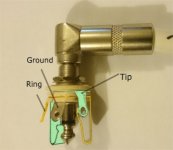Good morning fine folks,
this is my first post ever and I hope to not be violating some rules or not posting in the correct section.
I have purchased a Ludicrous Speed OD kit from Musikding.de for which you can see the schematics here. Being my first attempt, and being relatively inexperienced with soldering, it sort of went decently (and learned how to do acceptable soldering along the way) but alas a few things went wrong, including me stupidly mounting the 3PDT board that they included upside down (i.e. flipped a-la pancake).
As it was too late to desolder (I have a desoldering pump, but it's very basic) what I have done was to treat the board as upside down so I have done all the wiring mirrored. However, once I have completed soldering, I have tried to stomp on the footswitch and .. nothing happened
I'll try to bring this to my in-law this weekend as basically he used to do this stuff before retirement, but a couple of questions are:
1. The obvious first step would be to use a multimeter (which I have) to check for continuity, but I'm a newbie using it. My intuition is that I should start from the power input jack and walk my way "upwards" (whatever that means) but I have no clue what to check first. Can somebody suggest a good initial step to check the obvious?
2. One of the first suspect I had was that I mounted the LED diode flipped (I have checked multiple times the anode and cathode but .. I'm human). Is there a way using the multimeter to check orientation? I have used the multimeter in the "diode/continuity" mode (I guess?) and placed the black end on the input power supply ground and if I touch one of the three leg (only a particular one) it "beeps", which I guess that means that is ground? What do I make out of this information?
Thanks in advance
Alfredo
this is my first post ever and I hope to not be violating some rules or not posting in the correct section.
I have purchased a Ludicrous Speed OD kit from Musikding.de for which you can see the schematics here. Being my first attempt, and being relatively inexperienced with soldering, it sort of went decently (and learned how to do acceptable soldering along the way) but alas a few things went wrong, including me stupidly mounting the 3PDT board that they included upside down (i.e. flipped a-la pancake).
As it was too late to desolder (I have a desoldering pump, but it's very basic) what I have done was to treat the board as upside down so I have done all the wiring mirrored. However, once I have completed soldering, I have tried to stomp on the footswitch and .. nothing happened
I'll try to bring this to my in-law this weekend as basically he used to do this stuff before retirement, but a couple of questions are:
1. The obvious first step would be to use a multimeter (which I have) to check for continuity, but I'm a newbie using it. My intuition is that I should start from the power input jack and walk my way "upwards" (whatever that means) but I have no clue what to check first. Can somebody suggest a good initial step to check the obvious?
2. One of the first suspect I had was that I mounted the LED diode flipped (I have checked multiple times the anode and cathode but .. I'm human). Is there a way using the multimeter to check orientation? I have used the multimeter in the "diode/continuity" mode (I guess?) and placed the black end on the input power supply ground and if I touch one of the three leg (only a particular one) it "beeps", which I guess that means that is ground? What do I make out of this information?
Thanks in advance
Alfredo
Attachments
-
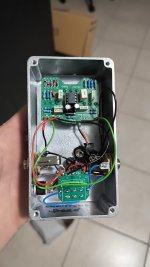 WhatsApp Image 2024-02-16 at 07.51.55.jpeg115 KB · Views: 32
WhatsApp Image 2024-02-16 at 07.51.55.jpeg115 KB · Views: 32 -
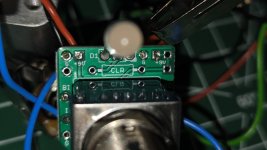 WhatsApp Image 2024-02-16 at 08.30.21 (1).jpeg234.3 KB · Views: 33
WhatsApp Image 2024-02-16 at 08.30.21 (1).jpeg234.3 KB · Views: 33 -
 WhatsApp Image 2024-02-16 at 08.30.21.jpeg321.1 KB · Views: 30
WhatsApp Image 2024-02-16 at 08.30.21.jpeg321.1 KB · Views: 30 -
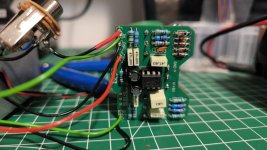 WhatsApp Image 2024-02-16 at 08.30.22 (1).jpeg272.8 KB · Views: 31
WhatsApp Image 2024-02-16 at 08.30.22 (1).jpeg272.8 KB · Views: 31 -
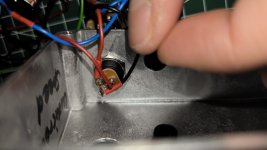 WhatsApp Image 2024-02-16 at 08.30.22.jpeg207.6 KB · Views: 32
WhatsApp Image 2024-02-16 at 08.30.22.jpeg207.6 KB · Views: 32



